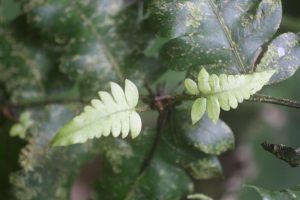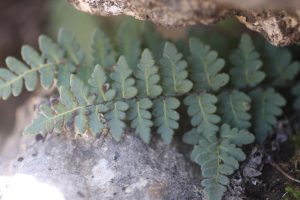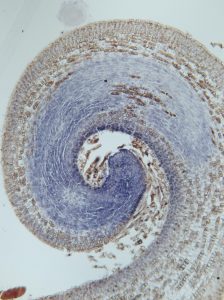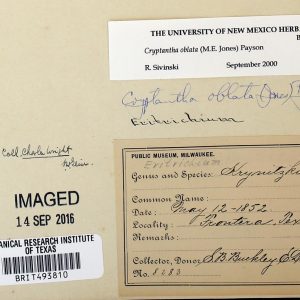
Ferns of Colombia
Colombia is estimated to harbor the highest fern diversity of any Neotropical country, with more than 1600 native fern species currently documented.
Ferns and their relatives (“pteridophytes”) arose approximately 420 million years ago and were the dominant plant groups for hundreds of millions of years afterwards. Today the pteridophytes are outnumbered by the diversity and abundance of other plant groups, such as those that bear flowers, but they remain diverse (with around 12,000 species), ecologically important, and are found throughout the world. This Thematic Collections Network (TCN) brings together 9 core institutions whose goal is to make digital images and data on the distribution and biology of 1.6 million fossil and modern ferns and their relatives available to researchers. This effort includes 39 US Museums and Herbaria that will provide on-line access of collections data to researchers worldwide who will be able to address pressing questions about the evolution, distribution, and biology of land plants.
The Philecology Herbarium (BRIT-SMU-VDB-NLU) holds nearly 50,000 pteridophyta specimens. The collections along with other herbaria can be viewed on PteridoPortal.
Each specimen goes through these four stages of digitization: 1) Imaging 2) Skeletal Transcription 3) Complete Transcription and 4) Georeferencing.
Last updated: April 26, 2024

Colombia is estimated to harbor the highest fern diversity of any Neotropical country, with more than 1600 native fern species currently documented.

We are interested in what the species of ferns and lycophytes are and where they occur—something often poorly known for tropical species—and the evolutionary relationships among the species. We generate phylogenetic trees based on DNA sequences that show how the species are related and use the trees as a framework for answering questions about character evolution, biogeography, and evolutionary processes.

Texas is home to more than 127 native species of ferns and lycophytes

The evolution of leaves changed life on Earth. We study the expression and phylogeny of leaf development genes in lycophytes and ferns to better understand the evolution and development of leaves in the land plants.

It was 1875, and John Muir was a busy man. He was already well-known for his journeys through central and northern California. His writing was published in
FORT WORTH BOTANIC GARDEN
3220 Botanic Garden Blvd
Fort Worth, Texas 76107
(817) 463-4160
Click here to email us!
BOTANICAL RESEARCH INSTITUTE OF TEXAS
FOLLOW US ON SOCIAL
We respectfully acknowledge that the Fort Worth Botanic Garden is located on traditional lands of Indigenous Peoples. We honor the ancestry, heritage, and gifts of all Indigenous Peoples who were sustained by these lands and give thanks to them. We are grateful that these lands continue to provide enrichment for many people today. [More…]
©2023 Fort Worth Botanic Garden